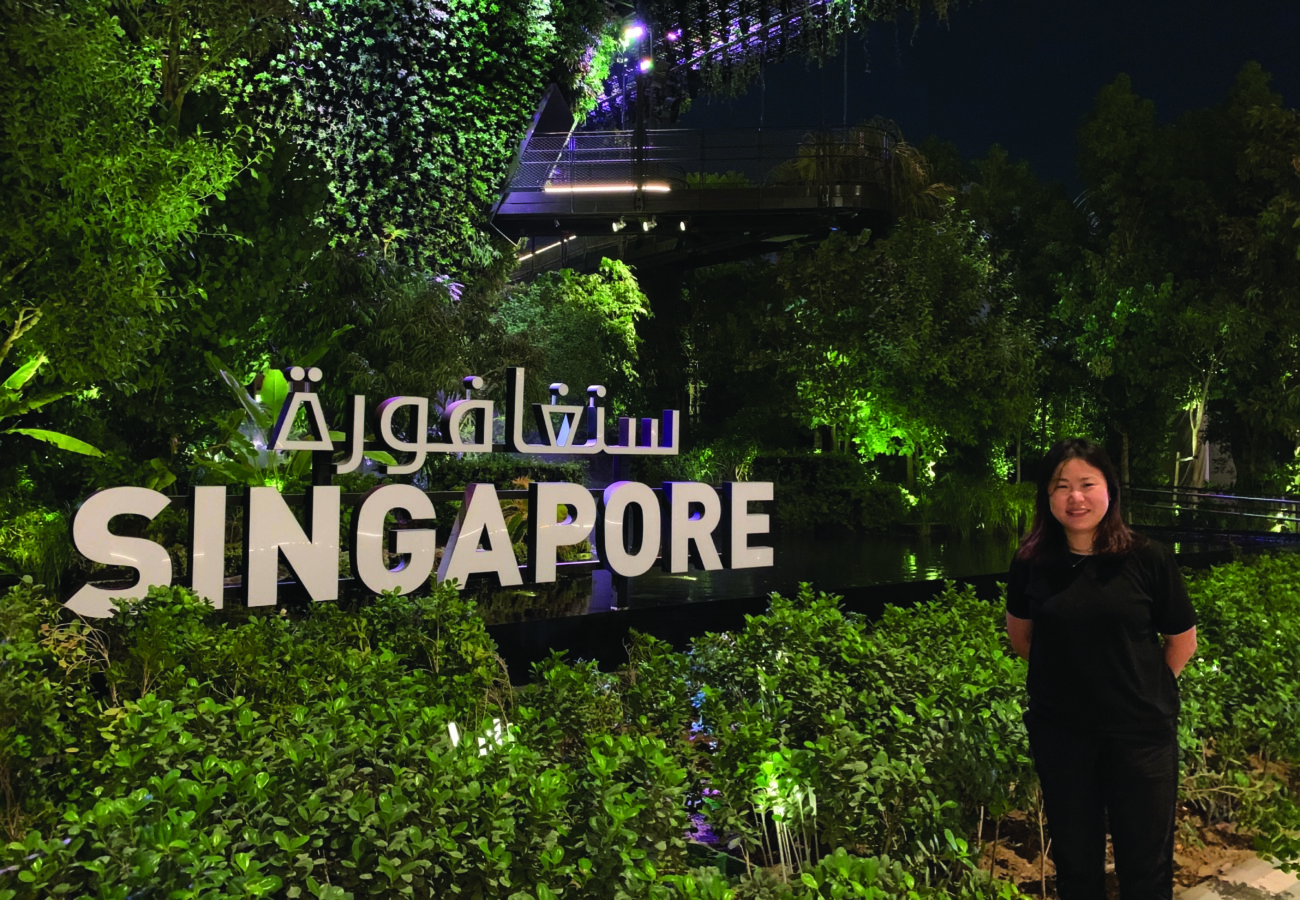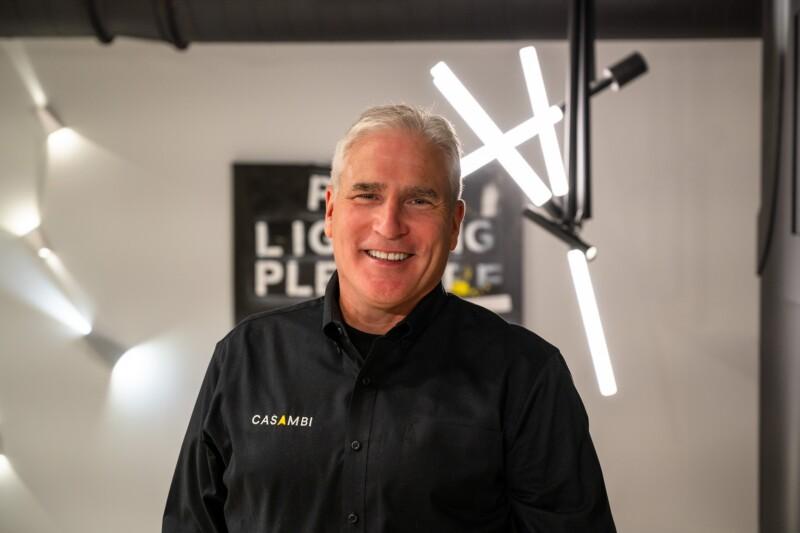Lighting Designer and Casambi Award Judge, Yah Li Toh on the intrinsic qualities of light

Yah Li shares what inspired her own journey into architecture and lighting design, hinting at what she’ll be looking out for when reviewing nominations for the upcoming Casambi Awards.
Light breathes life into a building. Just as a body is dead if the soul is absent, a building cannot fulfill its destiny – its design intention – without the activating energy that is borne out of good lighting. To master light is to hypnotize communities into making full use of the properties offered to them.
Yah Li, Principal of Light Collab (an award-winning lighting design practice based in Singapore and Japan), felt that the mesmeric qualities of light were somewhat underestimated in architecture. Having graduated from architecture school at the National University of Singapore, she turned her hand to designing light instead.
‘I have always been mesmerized by beautiful spaces and that sparked my journey into architecture. During my time at architectural school, there was little discussion about how a space can affect emotions. I realized that there is a common element within the most beautiful of spaces and that is light – you will always encounter a play of light and shadow. With the right light, amazing spaces come alive, touch your heart and make you feel’ she says.
In fact, Light Collab’s mantra, mission, and indeed their brand book itself, are largely predicated on this observation.
‘We believe in being a catalyst to inspire and create new perspectives, by challenging the status quo: Using light to reveal and accentuate the core principles of architectural design, we blend the art and science of lighting to create sustainable luminous environments’.
‘As a lighting design studio that welcomes collaborations from the creative field, the intentional displacement of the words ‘Light’ and ‘Collab’ in the brandmark expresses this concept visually as an open canvas -inviting and allowing collaborative efforts to occur. On our website, for example, the two words serve as perimeters framing the content it holds. The corporate palette adopts two opposite ends of the colour spectrum – cool and warm – to signify the coming together of two different creative energies, using blue and fluorescent orange’.
Architecture-grad-turned-lighting-star, Yah Li has gone on to receive many accolades for her work and activism in this discipline. She was one of the first to be accredited by the Certified Lighting Design Commission in the US, named a ‘top 40 under 40’ lighting designer at the Lighting Design Awards, recognized as a ‘Generation T Honouree’, coined a ‘Future-shaper’ honouree by Peak magazine, has been twice shortlisted for the Singapore President’s Designer of the Year Awards. When she’s not bringing Singaporean vibrancy to the world of architecture, Yah Li represents the IALD SEA and the CLD, and can be found in tertiary design studios sharing the virtues of good lighting design to the up-and-coming.
Reflecting on her own pathway into lighting design, Yah Li shares her views on what’s being taught in colleges and the integral skills she feels are required for success in the field:
‘It’s been fun and interesting conducting workshops and elective modules for lighting design in both architectural and interior design schools. However, I feel there is some way to go before lighting designers rightfully receive the same recognition and respect that architects, interior designers and landscape architects enjoy today. This is largely due to a lack of awareness. Our profession is an important one! Skills can be developed and acquired, but the critical criterion for success includes grit, determination, and perseverance. For anyone interested, it is important to see and feel for the light and be constantly interested in it’.
Light Collab is responsible for some iconic projects. They’ve lit all manner of buildings from corporate offices and high-end retail fit-outs to spiritual and civic sites. The Tower of Light in Dhaka, Bangladesh, is perhaps one of the most awe-inspiring. Dubbed the ‘stairway to heaven’, the tower stands 150 feet tall to form an unmissable landmark – a reminder to citizens of the city that their independence from oppressive military rule under Pakistan was valiantly fought for. In this instance, light was deployed as a powerful symbol of hope and the selfless sacrifice of the freedom fighters.
‘For all projects, we start from zero: We take apart the brief. We try to understand the norm. We challenge the status quo’, she says.
Most, if not all of their projects beautifully manifest a play between function and poetry, art and science – the essential elements of good lighting design – to remind us that while lighting design is a technical pursuit, intuition and psychology always factor in too.
‘When we were engaged to design the illumination for the newly renovated Parkroyal Collection Marina Bay, in Singapore, the architect had the vision to bring the garden indoors, into the amazing pre-existing atrium by John Portman & Associates. However, the amount of daylight filtering through the skylight was unable to support the growth of the trees. We do not usually specify grow lights, however, the atrium lighting was too important and we could not ignore the trees. Thus, the challenge of simultaneously balancing the needs of the hotel guests and the trees became very real. We thought of scenography and staging cyclical transformation fromdaytime forest to nighttime garden using the special grow lights as part of the narrative. We also saw an opportunity to bring life to the suspended sculpture in the atrium. We researched it and decided to select a music composition for the light to dance along to as part of the hourly night show in the evening, ‘In Light of Orchidea’. This formed the perfect marriage between science and art, sound and light.’
This approach was also applied by Light Collab on the Singapore Pavilion for the World Expo, Dubai 2020. They created a narrative for the lighting experience using lighting tools that supported the growth of plants and visually depicted the pulsating heartbeat of the forest with a spectrum that supports growth along with a music composition to feel it. Such project references show that as an industry, we’re starting to design for the subtler yet intrinsic qualities of light – Biophilic and Human-Centric Lighting. But as the energy crisis looms large, some opine that such crises risk dialing back progress resulting in the reversion to a soul-less efficiency-first design approach. How can we find balance?
‘There are always risks at any point in time. However, there are also opportunities to be explored. It takes the spirit of the lighting designer to see opportunities and try to create a new future and balance it. There are always functions to be met, but it is possible to find a creative take on it too’.
Yah Li is on the judging panel for this year’s Casambi Awards and will be helping us to identify the winning ways in which architectural lighting projects and products have deployed Casambi technology to bring big ideas to life -whether that’s marking a sustainable step forward, taking lighting design in a totally new direction, or going the distance to deliver a soul-tingling ‘je ne sais quoi’ lighting moment. Yah Li is one to watch and be watched by.
When asked what she’ll be looking for when scanning Casambi Award entries one predominant word springs to mind:
‘Innovation – I’m looking out for an interesting take on the challenges involved and creativity in the application! I’m excited to see the entries’.
Enter the 2023 Casambi Awards today!
Interested in learning more about Casambi? Drop us a note, and we’ll reach out to you:


